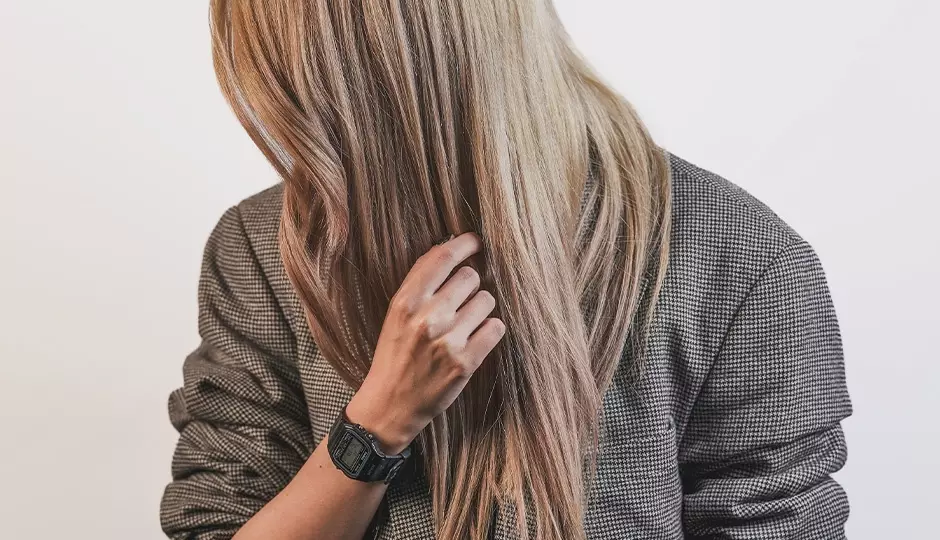No one is perfect, and an uneven hairline simply means one side of your hairline is slightly higher or thinner than the other. It's normal and not usually cause for concern.
However, if you are noticing significant changes in your hairline, it could be a sign of male or female pattern baldness. An uneven hairline, a receding hairline, or thinning hair are issues that affect many men and women.
What Is an Uneven Hairline?
Some people are born with an uneven hairline, while for others, it develops over time. But does an uneven hairline mean that you are balding? An uneven hairline is easy to spot because your hairline is noticeably different on either side of your head. While uneven hairlines can be insignificant, for some men and women, it causes worry that their hair is thinning or, worse, that they are losing their hair.
What Causes an Uneven Hairline?
For some people, an uneven hairline becomes more noticeable as they mature. Often, your hairline begins to change during your teenage years and continues throughout adulthood, with your hair thinning and your hairline edging slightly higher.
An uneven hairline can be caused by several factors, including genetics, traction alopecia, and male or female pattern baldness. Hair loss is often a symptom rather than a diagnosis and involves a range of genetic, endocrine, immune, and inflammatory processes.
genetics
Genetics plays a significant role in developing an uneven hairline, thinning hair, and hair loss. Just as genetics determine your height, body type, and the color of your hair and eyes, they also decide whether or not you will have an uneven hairline.
Genetics is one of the primary causes of thinning hair and hair loss in men and women. While you can't change your genetics, there are steps you can take to reduce or stop hair loss caused by genetic factors.
traction alopecia
Traction Alopecia is a type of hair loss caused by constant pulling and tension on your hair. It is most commonly associated with tight hairstyles worn for extended periods, such as dreadlocks, tight ponytails, weaves, braids, pigtails, or cornrows.
male and female pattern baldness
Also known as androgenetic alopecia, male and female pattern baldness is one of the most common forms of hair loss. In men, this condition causes hair loss in a well-defined pattern, beginning above the temples. Over time, the hairline recedes and forms the characteristic "M" shape. Hair may also thin near the top of the head and often progresses to partial or complete baldness. Hair loss from androgenetic alopecia differs in women, with the hair becoming thinner all over the scalp, but rarely results in total baldness.
Does an Uneven Hairline Mean You're Balding?
Just because your hairline is uneven, it doesn't necessarily mean you're going bald. An uneven hairline is not unusual and can result from many different factors. If you are seeing noticeable changes to your hairline or experiencing increased shedding, there's no need to panic, but you may want to consult with an expert.
As soon as you notice changes and become concerned, it's vital to determine if you are losing your hair and, if so, what is causing the hair loss. Thinning hair and hair loss can be devastating, but the sooner you determine the cause, the better your chances of regrowing and keeping your hair.
At Mane Image, our team of hair experts can help you determine the cause of your hair loss and recommend steps to stop the loss. If you are concerned about your uneven hairline and want to know what you can do about it, contact us today and schedule your FREE initial consultation.












